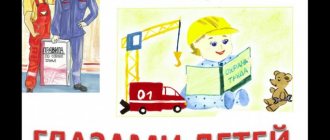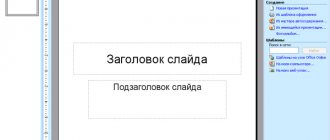A job description for a kindergarten teacher is needed as an addition to the employment contract, which explains its points. Although it is not mentioned in modern legislation, business practice and recommendations of regulatory authorities lead to the fact that most employers include it in standard labor documentation packages. As a legally binding document, this instruction must be correctly written and formatted.
- Form and sample
- Free download
- Online viewing
- Expert tested
FILES
Sample job description for a kindergarten teacher
General section
- A person applying for a job as a kindergarten teacher must satisfy the following qualification rules:
- secondary specialized or higher education in the profile “Education and Pedagogy”;
- documents certifying a successfully completed medical examination;
- 1 year relevant work experience.
- The kindergarten teacher reports to the head of the institution.
- A kindergarten teacher is hired and dismissed with the appropriate instructions from the head of the institution.
- During the absence of the teacher, her functions are performed by another kindergarten employee appointed by its manager.
- A kindergarten teacher must have a set of skills in the following areas:
- legislation, industry standards and instructions that regulate the scope of its activities;
- techniques for providing immediate medical care;
- basic techniques of pedagogical and psychological communication with students, taking into account age specifics;
- standards of communication with children;
- age characteristics of students;
- techniques for monitoring student activities;
- theoretical foundations of preschool pedagogical education;
- methods of prevention and resolution of conflict situations;
- basic modern techniques for teaching children;
- methods of communication with children and their parents;
- ethical standards applied in children's educational institutions;
- standards for maintaining relevant documentation;
- structure, main personnel, rules of the kindergarten;
- rules for handling relevant technical equipment and software in the field of creating presentations, conducting multimedia classes and other events;
- sanitary and fire safety standards in the institution.
- The kindergarten teacher is guided by:
- current legislation, industry norms and rules;
- relevant documentation of the institution;
- provisions of this instruction.
Responsibilities
- Ensuring the education and upbringing of children within the specified standards.
- Monitoring children's behavior and identifying the causes of suspected problem areas.
- Maintaining relevant documentation within the scope of their competence.
- Interaction with children, their parents, colleagues in order to prevent conflicts, resolve them, and identify problematic issues.
- Assisting colleagues in performing their responsibilities.
- Ensuring that students comply with study and rest schedules.
- Planning educational programs in the area of your competence.
- Informing the head of the institution and other employees about possible problems in their area of competence.
- Interaction with the parent committee and teaching council in the area of their responsibility.
- Monitoring the leisure time of pupils, both independently and together with other workers.
- Helping children within your competence.
- Monitoring order in the kindergarten premises.
- Ensuring sanitary and hygienic standards in subordinate groups of pupils.
- Maintaining your appearance in accordance with specified standards.
- Passing routine medical examinations.
- Passing the certification in the manner specified in the relevant documents.
Responsibility
A kindergarten teacher can be held accountable for the following violations:
- Causing damage to a kindergarten - within the limits specified in the current legislation and documents of the institution.
- Inadequate performance of assigned duties - within the limits given in labor legislation.
- Failure to comply with requirements and standards for the treatment of children - in accordance with sections of current legislation.
- Offenses committed during the performance of work are in accordance with articles of civil, administrative and labor legislation.
Rights
A kindergarten teacher is granted by the employer the rights to:
- Making proposals for management on possible ways to improve educational and educational procedures.
- Participation in meetings of the institution’s team.
- Presentation of requirements to the management of the institution regarding the provision of conditions necessary for the performance of work functions.
- Receiving additional payments if the corresponding planned indicators are met.
- Obtaining from other employees data required in their activities.
- Receiving work clothes and necessary supplies in the manner established in the relevant documents of the institution.
Occupational safety magazines
Logs are necessary to record and record compliance with certain legal requirements in the field of labor protection.
The main journals on labor protection include:
- Introductory briefing log.
- On-the-job training log.
- Journal for issuing instructions on labor protection.
- Journal of labor safety instructions.
- Logbook for assignment of group I for electrical safety to non-electrical personnel.
- A log of inspections and checks of the technical condition of power tools.
- Logbook for recording and testing portable ladders and stepladders.
- Accident register.
All magazines must be laced and numbered. The numbering of the magazine begins with the title page.
What you need to know when writing a job description
Labor laws do not have standards defining the structure and content of job descriptions. Therefore, employers rely on standard instructions, many of which are written based on professional standards. These instructions are built according to certain rules governing their structure and content.
Typical instruction structure:
- General section.
- Job functions.
- Responsibility for violations.
- Employee rights.
Some employers, especially large ones or those working in industries with their own specifics, add sections here that describe in detail certain aspects of their relations with employees.
Popular additional sections:
- Candidate Qualification Requirements.
- Job relationships.
- Parameters for assessing performance results.
Attention! The content of the job description should not conflict with the employment contract or cross its boundaries. It is considered as a document supplementing the employment contract, and not replacing it.
a common part
The initial section, which sets out the basic parameters of the employee’s activities. It contains requirements for the candidate’s education for the position, his experience, who he is subordinate to, as well as other basic parameters that the employee and his management need to focus on.
The skills described here should fit well with the responsibilities given in the next section. Depending on the profile of the institution, the required skills may vary significantly. So, in relation to the profession of a kindergarten teacher, you may need skills in teaching students a foreign language, music or writing pictures.
Attention! A preschool teacher is subject to strict requirements regarding the availability of appropriate education, health status, knowledge in the field of working with children, and understanding of the specifics of a preschool institution. All this should be comprehensively reflected in the section.
Functions
This part is reserved for listing the employee’s labor functions. The range of responsibilities of a teacher is extensive: the specialist is responsible not only for children, but also for interaction with parents, the teachers’ council, and maintaining order in the institution. If the kindergarten is engaged in specialized education (children with health problems; teaching English to students, etc.), then the associated responsibilities should be reflected in the section.
Responsibility
A mandatory section that provides a list of possible reasons for holding an employee accountable by his employer. These reasons are given in a general form, as are the corresponding penalties, since the specifics can only be determined through appropriate proceedings, including in court.
Rights
The final standard section is reserved for the list of rights granted by the employer. The rights given are standard, but some institutions may supplement them, based on their size, specialization, and other factors.
The job description for a teacher must be agreed upon with specialists, since the field of preschool education is regulated by numerous standards and laws that should not be violated in the instructions. Only after taking into account the specialists’ edits is the document transferred to the head of the institution. The instruction acquires its final legal status after it is signed by the employee himself, the manager and those employees whose signatures are required according to the institution’s document flow rules.
Internship
An internship is the process of acquiring the necessary skills to safely perform work in a particular profession.
The internship must be completed by:
- all newly hired and transferred workers of blue-collar professions;
- workers and specialists engaged in work that is subject to additional (increased) labor safety requirements;
- graduates of higher and secondary specialized educational institutions, vocational schools.
Occupational safety internship is carried out under the guidance of an experienced mentor appointed by the relevant order.
The order for the appointment of an internship is issued before the employee begins the internship.
The order for admission to work is issued after the employee completes the internship.
Attention! Information about the employee completing an internship is also entered into the On-the-job Instruction Record Book.
Occupational safety training programs
The occupational safety training program is a document on the basis of which the training of employees and specialists of an institution is carried out.
The institution must develop and approve the following occupational safety training programs:
- for professions and positions in accordance with the staffing schedule of the preschool educational institution (for example, “Occupational safety training program for a cook”, “Occupational safety training program for an office cleaner”);
- by type of work that is carried out in preschool educational institutions (for example, “Training program on labor protection during loading and unloading operations”, “Training program on labor protection during work at heights”).
The training program is compiled for each profession (type of work) separately.
Exception : training program for managers and specialists and training program for teaching staff. In these cases, general training programs are drawn up.
Occupational safety training programs for workers are developed on the basis of standard training programs and approved by the head of the institution.
Occupational Safety and Health Regulations
A labor safety regulation is a document that provides information about certain labor protection processes and the responsibilities of responsible persons and employees of the institution.
The set of labor protection documents should include the following provisions:
- Regulations on the labor protection management system.
- Regulations on the investigation and recording of industrial accidents.
- Regulations on the procedure for providing workers with special clothing, special footwear and other personal protective equipment.
- Regulations on providing workers with flushing and (or) neutralizing agents.
- Regulations on the organization of training and testing of knowledge on labor protection.
- Regulations on the authorized person for labor protection from the labor collective.
- Regulations on the labor protection committee.
Labor protection regulations must be approved by the head of the institution. All preschool employees must be familiar with the contents of the Regulations, indicating the signature and date.
Personal cards
The institution must maintain the following personal records of employees:
A personal PPE issuance record card is a document that indicates information about the personal protective equipment issued to the employee.
The form of the personal registration card for the issuance of personal protective equipment was approved by Order No. 290n dated June 1, 2009 “On approval of Intersectoral Rules for Providing Workers with Special Clothing, Special Footwear and Other Personal Protective Equipment.”
A personal PPE registration card is created for an employee at the time of his employment in an institution, or upon transfer to a new workplace, if new working conditions require the use of PPE.
A personal record card for the issuance of flushing and (or) neutralizing agents is a document that indicates information about the flushing and (or) neutralizing agents issued to the employee.
The form of the Personal Accounting Card for the issuance of flushing and (or) neutralizing agents was approved by Order No. 1122n dated December 17, 2010 “On approval of standard standards for the free issuance of flushing and (or) neutralizing agents to employees and the labor safety standard “Providing workers with flushing and (or) neutralizing agents” .
The card is assigned to an employee at the time of his employment in an institution, or upon transfer to a new workplace, if new working conditions require the use of flushing and (or) neutralizing agents.




